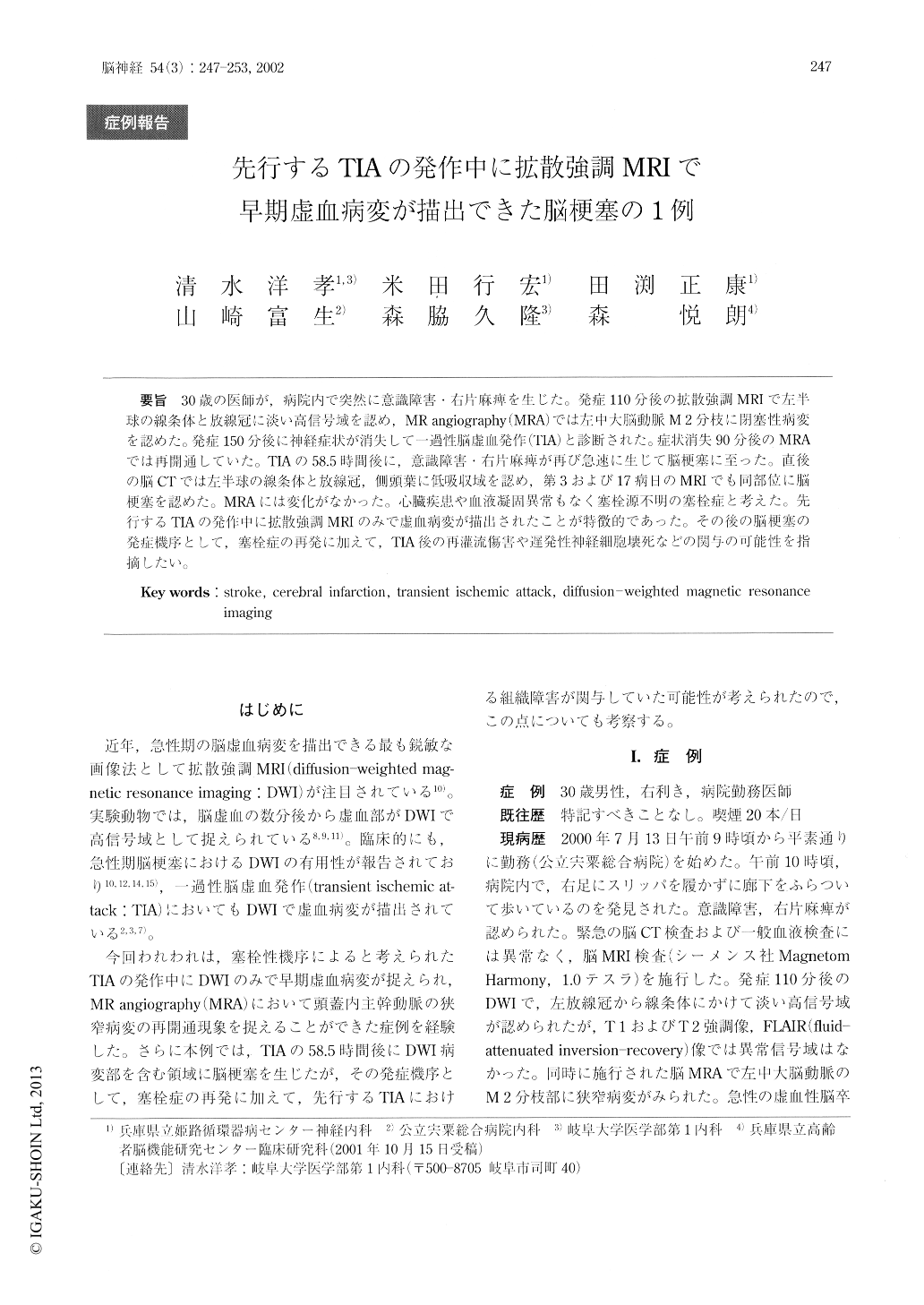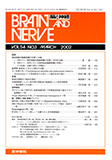Japanese
English
- 有料閲覧
- Abstract 文献概要
- 1ページ目 Look Inside
30歳の医師が,病院内で突然に意識障害・右片麻痺を生じた。発症110分後の拡散強調MRIで左半球の線条体と放線冠に淡い高信号域を認め,MR angiography(MRA)では左中大脳動脈M2分枝に閉塞性病変を認めた。発症150分後に神経症状が消失して一過性脳虚血発作(TIA)と診断された。症状消失90分後のMRAでは再開通していた。TIAの58.5時間後に,意識障害・右片麻痺が再び急速に生じて脳梗塞に至った。直後の脳CTでは左半球の線条体と放線冠,側頭葉に低吸収域を認め,第3および17病日のMRIでも同部位に脳梗塞を認めた。MRAには変化がなかった。心臓疾患や血液凝固異常もなく塞栓源不明の塞栓症と考えた。先行するTIAの発作中に拡散強調MRIのみで虚血病変が描出されたことが特徴的であった。その後の脳梗塞の発症機序として,塞栓症の再発に加えて,TIA後の再灌流傷害や遅発性神経細胞壊死などの関与の可能性を指摘したい。
We reported a patient with transient ischemic attack (TIA) , subsequently evolving to a cerebral infarction, in whom ictal diffusion-weighted magnetic resonance imaging ( MRI ) detected early ischemic lesion in the left hemisphere.
The patient was a 30-year-old right-handed male medical doctor, who had an in-hospital episode of TIA with obtundation and right hemiparesis, which lasted for 150 minutes. Ictal diffusion-weighted MRI ob-tained 110 minutes after symptom onset demonstrated an area of high signal intensity in the left striatum and corona radiata, whereas T 2-weighted and FLAIR im-ages were entirely normal.

Copyright © 2002, Igaku-Shoin Ltd. All rights reserved.


